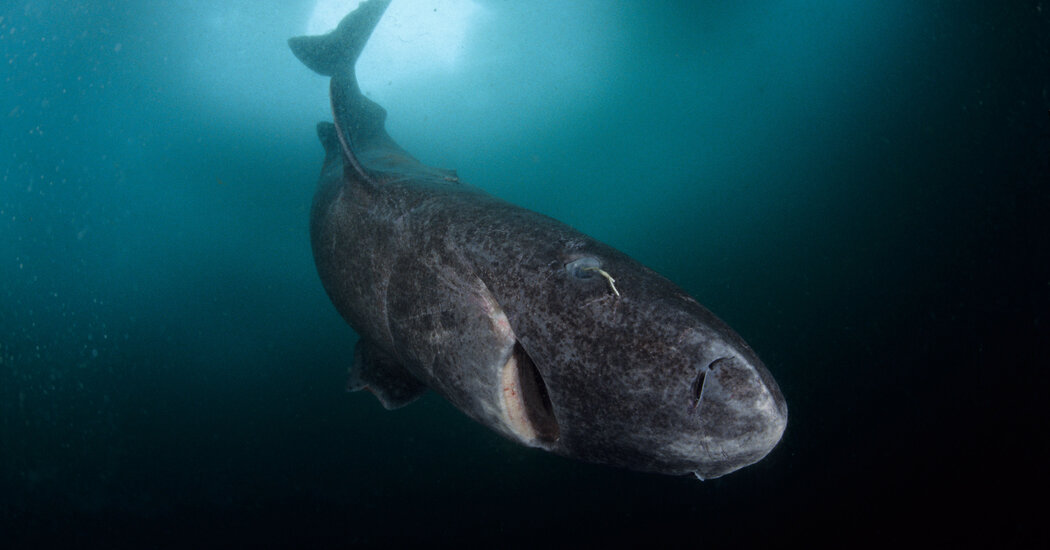Scientists have mapped the genome of the Greenland shark, which could offer clues to the animal’s extreme longevity.
The Greenland shark is not exactly charismatic. Its hulking frame is covered by sandpaper skin. Its fins, stunted, sit awkwardly along its sides. And its eyes, perpetually cloudy, are often host to wormlike parasites that dangle as the shark slowly roams the depths of the North Atlantic and Arctic oceans.
But looks aside, the species has a surprising capacity: It can live for as long as about 400 years. Now, an international team of scientists from Europe and the United States has mapped the genome of the Greenland shark, offering scientists an opportunity to glean the secret to the shark’s outstanding longevity.
“Any research into the mechanisms of how this animal is able to live for such a long time will at some point need the genome sequence,” said Steve Hoffmann, a computational biologist at the Leibniz Institute on Aging and the Friedrich Schiller University Jena, in Germany, who led the research.
The findings, published as a preprint in bioRxiv, provide a comprehensive assembly of the shark’s genetic makeup. It also provides initial insights into the specific genes and biological mechanisms, including a network of duplicated genes involved in DNA repair, that may be responsible for the shark’s exceptional life span.
The scientists found that Greenland sharks possessed very large genomes: about 6.5 billion DNA “base pairs,” or building blocks — about twice as many as in humans, and the biggest genome of any other shark sequenced to date.
“We wouldn’t have guessed that it’s so large,” said Arne Sahm, a bioinformatician also at the Leibniz Institute on Aging and Ruhr University Bochum, who was the lead author on the study.
